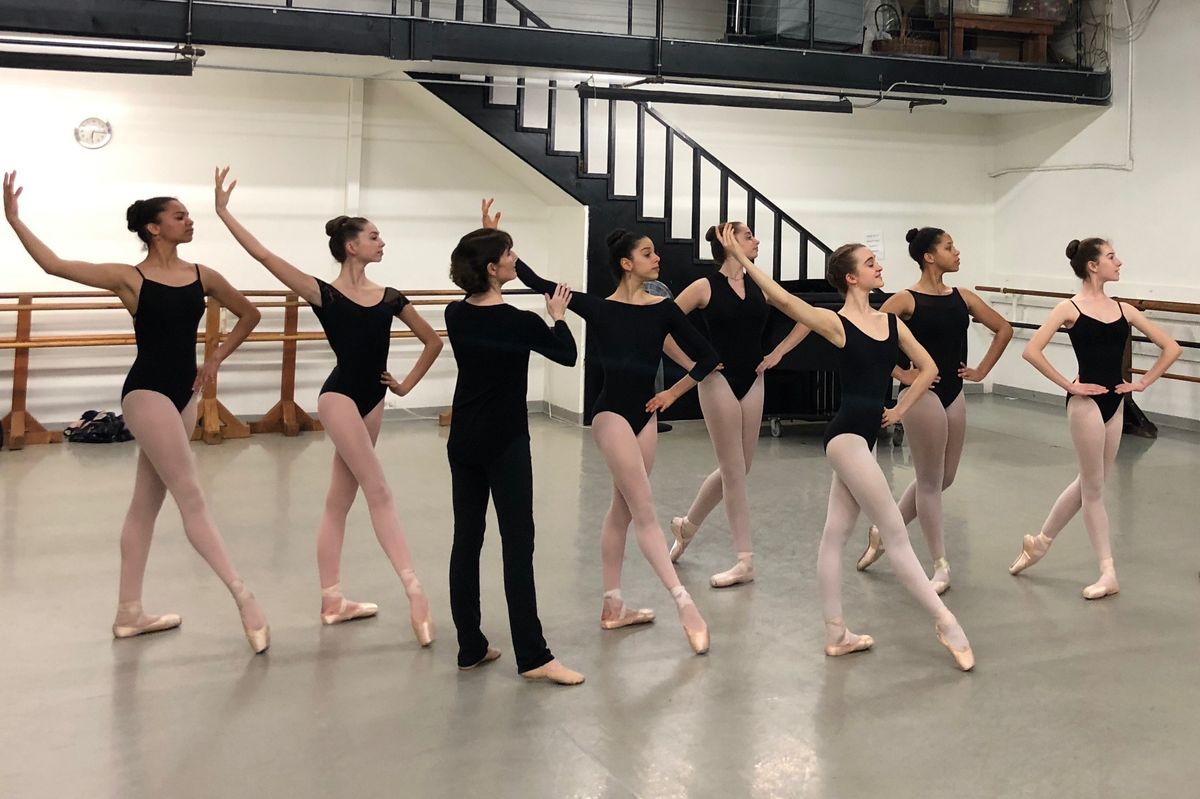
As Princess Aurora in The Sleeping Beauty, ballerina Margot Fonteyn entered the stage with the excitement and abandon of a teenage girl on her birthday. “The way she ran out and down the stairs, I thought she was 16 years old!” says Sophie Monat, dance faculty member at California State University, Long Beach, and teacher at Westside School of Ballet. “But Fonteyn was actually 60 at the time. Her entrance was such an electrifying moment because of the way she embodied her character.”
How dancers enter and exit the stage can leave a lasting impression. A great entrance sets the mood and captures the audience’s attention, while a sloppy run into the wings breaks the magical atmosphere the dancer just worked so hard to create. Practicing entrances and exits in the studio—in context, and as often as possible—will help your dancers understand just how important these seemingly minor moments are to any piece.
Establish the space
To make a good entrance, dancers must have a good understanding of the space and where they need to be. It helps to mark stage dimensions in the studio, using tape to define wings and marks such as eighth, quarter and center. “If students see where the wings start, they can practice getting ready and staying hidden from the audience’s sightline,” says Jamie Roberts, director of Huntingdon Dance Academy in Pennsylvania. Reinforce the theater golden rule: If dancers can see the audience, the audience can see them.
Set the mood
Once students understand their path, they can practice entering the space with an appropriate presence. A good way to establish a rapport with an audience is to develop a presence that makes sense for the performance, in terms of a dancer’s outward expression and embodied feeling. Remind students not to look down to find their mark, because it breaks character and conveys a lack of confidence. If you see them entering with their focus down, encourage them to go back, lift their gaze and try again. “When you have a conversation with someone, you don’t look at the floor,” says Natasha Brooksher, co-artistic director of Brooksher Ballet in Arizona.
If dancers are entering in a group, have them organize themselves in the wings by getting into line or formation. Encourage them to also establish their carriage, even though they can’t yet be seen. “What they do in the wings is critical for what they will do onstage,” says Roberts.
Practice timing
Considering the pace of entrances and exits will help dancers reflect the character or style of the piece. “They should exude the right quality,” says Monat. A bright and breezy variation might require a quick run, for example, and a legato solo might call for a slow, elegant walk. “But it can be a fine line,” she says. “Take too long, and the audience thinks the dancer is milking it. If they rush, dancers look like they’re apologizing.”
When coordinating a group entrance, encourage dancers to be aware of the rhythm or musicality. “If they all walk in with their eyes in the same direction and on the same count of the music, it can be quite stunning,” says Monat. “Focus and musicality can make a huge difference, especially with dancers who are not as accomplished technically.”
Exit fully
When exiting the stage, dancers must make sure they’re all the way off before they break character. “They should carry themselves with grace and poise until they’re past the leg,” says Brooksher. “The audience doesn’t want to see them tromping off like pedestrians.” For instance, a jeté exit doesn’t stop at the curtain—the jump’s momentum continues far into the wings. The exit for a contemporary piece requires the same style as the dance itself, with deliberate and unwavering energy. Monat makes sure to set bows at the beginning of the rehearsal process, too, as part of the choreography.
“Think of the entrance and exit as part of the dance,” says Monat. “A classical variation, for example, not only has a beginning, middle and an end, but a preface and an epilogue.” The dance starts before it can be seen onstage and continues long after the dancers exit, leaving a lasting impression with the audience.




